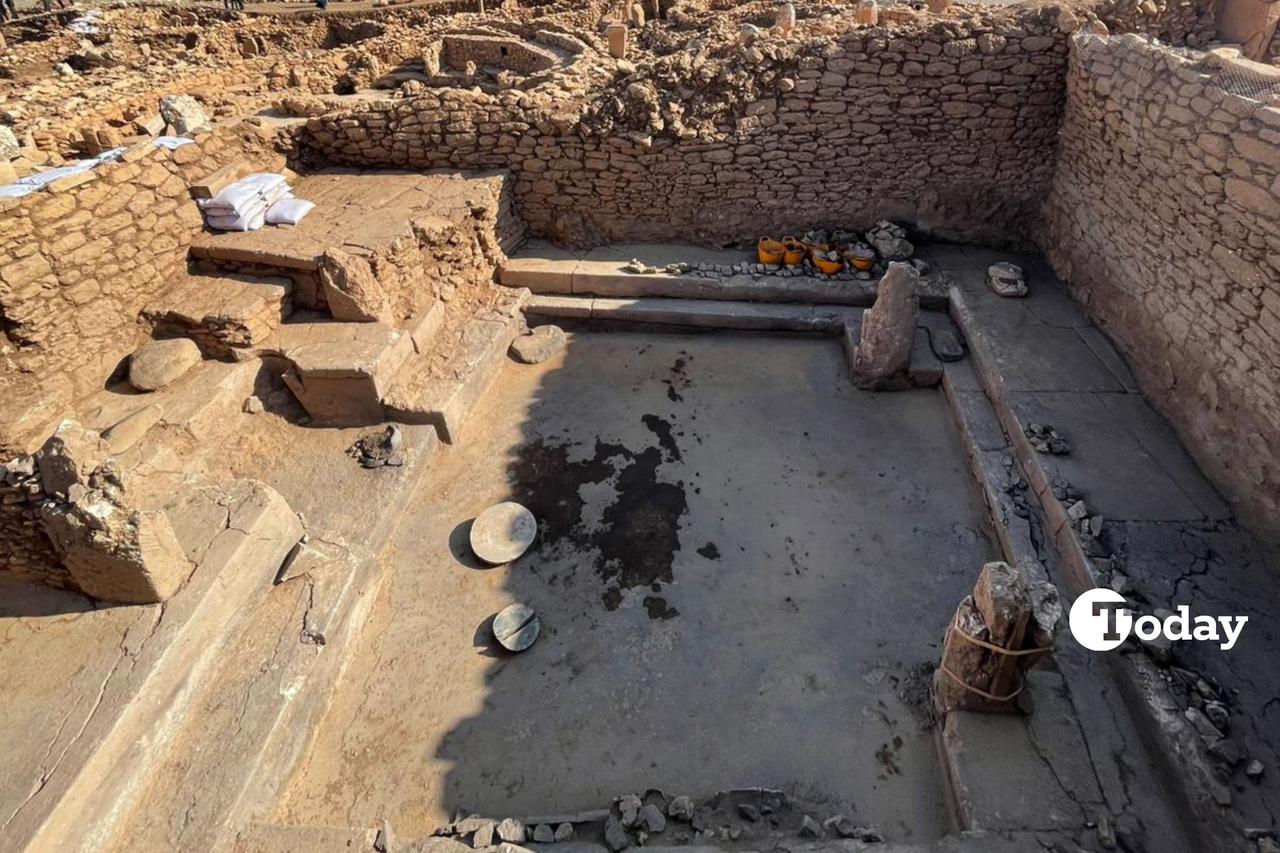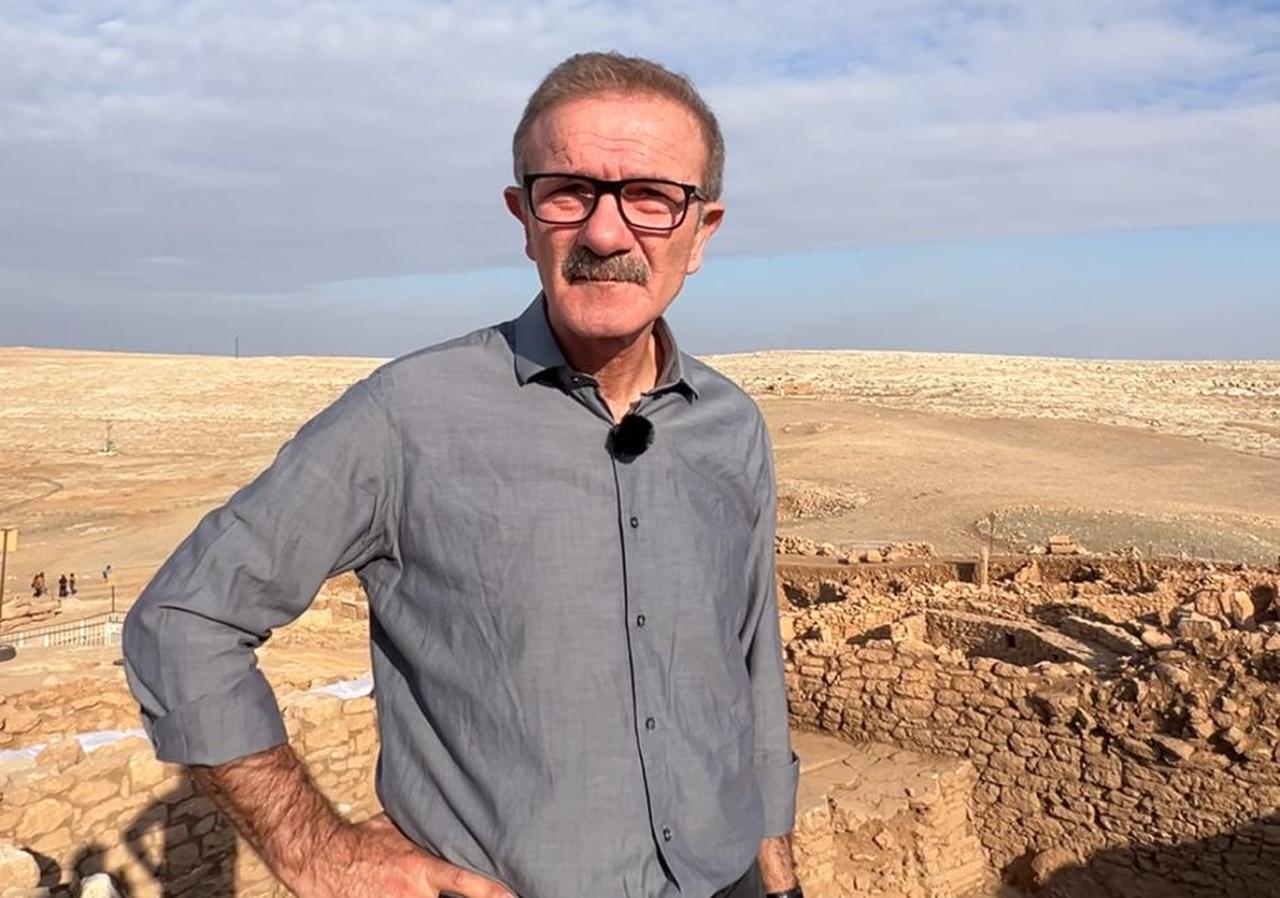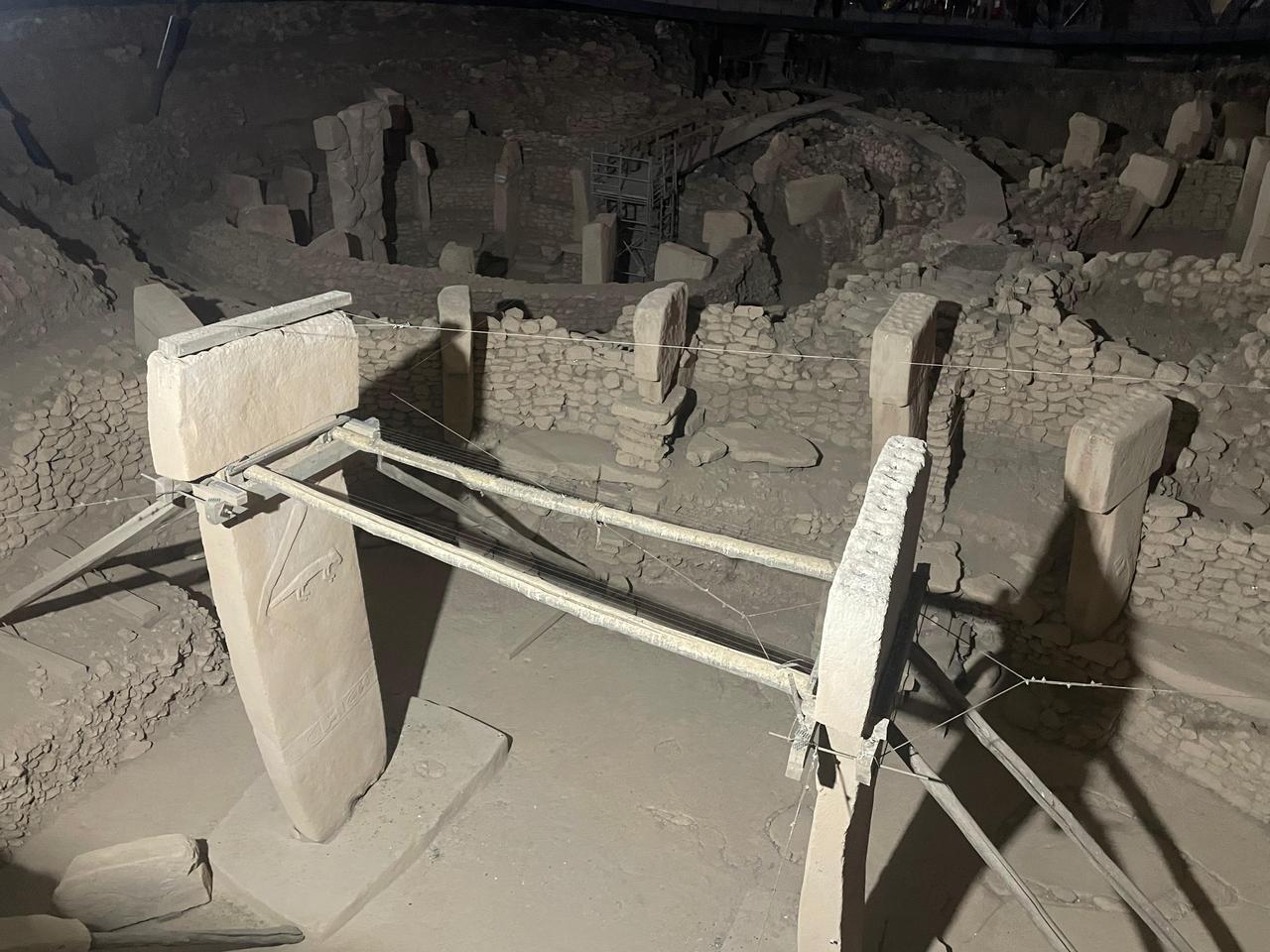
A newly identified rectangular building where people once gathered at Karahantepe, an early Neolithic site in Sanliurfa in southeastern Türkiye, is offering fresh architectural detail for the wider Tas Tepeler (Stone Mounds) Project. Excavation director Professor Necmi Karul and his team recently documented the structure, which Türkiye Today also recorded on site, while new research at nearby Gobeklitepe continues to shift attention toward everyday life as well as ritual activity.

Located on one of the highest parts of Karahantepe, the new building stands next to an earlier communal structure that has been under excavation for two years. Speaking to Türkiye Today, Professor Karul noted that this earlier building already yielded a human sculpture carved in a sitting position on a bench, and that the newly exposed structure lies immediately beside it.
He explained that the new building has a rectangular ground plan measuring around 9 by 7 meters and described it as a large enclosed space where people came together. According to his account, the walls rise to about 3.5 meters, and parts of the upper sections are covered with plaster that is still very well preserved in some areas.

Karul stated that the construction makes direct use of the local bedrock. Along the interior walls, two stepped benches were carved from the rock itself, shaping the space into a setting where participants could sit or stand on different levels. He added that four pillars were placed symmetrically within the building and that these upright elements formed a clear part of the internal layout.
He also drew attention to a feature on the north wall, where a large stone bowl is set into the masonry. In front of this bowl, the excavators identified a channel that would have carried liquid away from the installation.

Karul said that these details “show us this building was used for some ritual reason, and this liquid was a part of this ritual,” indicating that the space combined gathering, display and controlled movement of substances within a single architectural setting.

Speaking to Türkiye Today at Karahantepe about the wider context, Dr. Lee Clare of the German Archaeological Institute (DAI), who coordinates the Gobeklitepe Research Project, underlined how the last phase of work has changed the way researchers look at Tas Tepeler as a whole. He said, “The last five years have been really quite extraordinary here at the Tas Tepeler sites and of course from my experience at Gobeklitepe things have changed dramatically,” and pointed to a steady increase in conservation work that has built on earlier efforts such as the construction of protective shelters.
Clare noted that excavations have continued in parallel with these conservation measures and that certain moments stand out in recent seasons. He highlighted the discovery in 2023 of a limestone wild boar sculpture in Building D at Gobeklitepe, describing it as a “wonderful” and “extremely exciting” find that drew attention to the way monumental art and architecture came together on the site.

According to Clare, recent fieldwork has started to focus more strongly on areas of everyday occupation at Gobeklitepe. He explained that his team has been excavating in what he called a domestic area and said they have been concentrating on this part of the site more than before. Over roughly the last decade, he noted, archaeologists have come to realise that Gobeklitepe should not be seen only as a ritual location. As he put it, the site is “not just a ritual site but also a domestic site, a settlement,” and the team has begun to look more closely at dwellings and other built spaces that belong to daily life.
Clare added that they have now identified striking examples of domestic buildings, which he described as dwellings that are changing their picture of Gobeklitepe. These structures, together with the ritual buildings, are helping researchers bring together different strands of evidence about how people lived, gathered and performed activities there.

Clare also stressed the role of comparison within the Tas Tepeler Project, which links Gobeklitepe with Karahantepe and other related sites. He noted that, before the project began, researchers working at Gobeklitepe had almost no comparable settlements apart from Nevali Cori. Now, he said, they can compare data from Gobeklitepe with findings from several other Tas Tepeler sites and can see many similarities as well as small differences between them.
He described this broader framework as an exciting development and said that the team is looking ahead to the next five years of research. Within this setting, the newly exposed communal building at Karahantepe, with its benches, pillars and stone bowl with a channel for liquids, now stands alongside Gobeklitepe’s ritual and domestic structures as part of a wider effort to understand how early communities in this region built, gathered and carried out their activities.